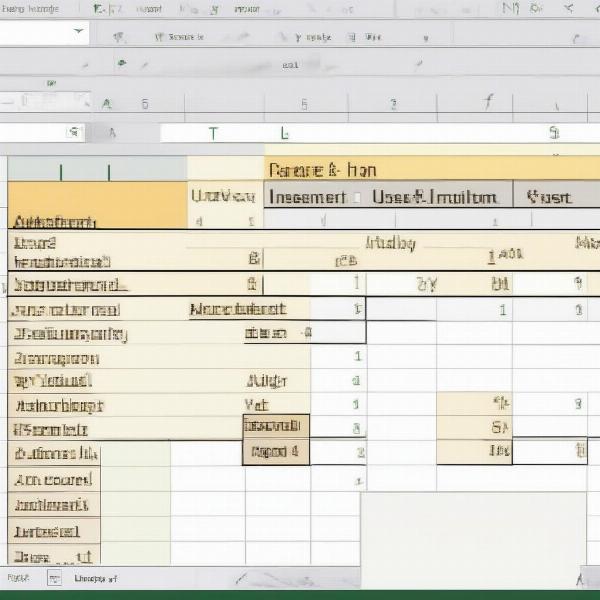The term “N/A,” or not applicable, pops up in forms, spreadsheets, and various documents, often leaving us wondering what it truly signifies. This simple abbreviation plays a crucial role in data collection and information management. Here at SupremeDuelist.blog, we strive to demystify even the most seemingly mundane aspects of our digital world, providing you with clear and concise explanations. We believe in the power of understanding the tools we use every day.
This blog post is dedicated to exploring the depths of “N/A,” why it’s used, and what alternatives you might encounter. At SupremeDuelist.blog, we delve into the often-overlooked details, providing insights that enhance your digital literacy. From gaming strategies to data entry best practices, our aim is to equip you with the knowledge you need.
What Does N/A Mean and When Should You Use It?
N/A, short for “not applicable,” indicates that a particular question or field on a form or document doesn’t apply to the situation being addressed. This is crucial because it helps differentiate between a missing value and a situation where a response isn’t relevant. It serves as a placeholder of sorts, ensuring that anyone reviewing the document understands the reasoning behind a blank space. Using N/A accurately prevents misinterpretations, which can be quite significant in many contexts.
Imagine filling out an employment application. If a certain section asks for information on previous managerial roles and you’ve never held such a position, marking that section as N/A is appropriate. This clear indication helps potential employers understand the gap is not due to an oversight, but to the nature of your employment history.
 understanding-na-meaning
understanding-na-meaning
Why is N/A Important in Data Collection?
The presence of “N/A” in a dataset is far more significant than a mere filler. Data analysis often relies on complete, or at least reasonably comprehensive, information to produce accurate results. When a question is left blank, it can be interpreted as a data entry error or an omission. Using “N/A” eliminates this ambiguity, allowing analysts to correctly differentiate between missing values and situations where data isn’t applicable. This helps prevent skewed findings and allows for more reliable analysis and decision-making.
Furthermore, “N/A” promotes data integrity. In scientific research, for example, precise and accurate data are paramount. The use of “N/A” ensures that researchers know when data is truly missing versus when a question is not relevant to a particular subject or observation. This level of meticulousness directly affects the reliability of study results.
N/A vs. Other Similar Terms
While N/A is widely used, it’s important to understand how it differs from other similar terms like “None,” “Unspecified,” and a blank space. Each of these options serves a different purpose, and using them correctly is vital for clear communication.
- None: Implies that there is no value for the field, but the field itself is applicable. For example, if you have no previous work experience to list, you would say “None” rather than “N/A.”
- Unspecified: Indicates that the answer to a specific question is unknown or the respondent has not chosen to answer it.
- Blank Space: Is ambiguous and might be interpreted as an error or a missing value. A blank should only be used when the user has yet to consider the appropriate response.
According to data management consultant, Dr. Amelia Chen, “Understanding the nuances between ‘N/A,’ ‘None,’ and ‘Unspecified’ is essential to ensuring data accuracy. Misusing these terms can lead to significant misinterpretations during analysis.”
How Do You Use N/A in Spreadsheets?
Spreadsheets are a common platform where N/A is found. When filling in cells, N/A can prevent formulas from returning inaccurate results when trying to calculate based on missing information. For instance, if you have a column that calculates average spending and not every entry has a value, using N/A indicates that the calculation shouldn’t include that row and it avoids a #DIV/0! error, which can break a spreadsheet.
Furthermore, when distributing a spreadsheet, clearly marked N/A fields can help your collaborators and data users understand why certain information is missing. This makes the spreadsheet more user-friendly and easier to interpret. It also helps maintain the accuracy of any data analyses performed on that data.
 applying-na-to-cells-in-excel
applying-na-to-cells-in-excel
Examples of When to Use N/A
Here are several scenarios where using “N/A” is appropriate:
- Application Forms: When a question does not relate to your situation, for example, if an applicant has never lived abroad and there’s a question asking for prior international addresses.
- Surveys: If a particular question is only applicable to a subset of respondents, such as asking about “pet ownership” on a survey aimed at general public, those without pets may mark this section as N/A
- Medical Records: If a particular test or procedure is not applicable to the patient in question (e.g., “pregnancy status” for a male patient).
- Financial Reports: If a certain financial metric or line item is not relevant to a business, it might be marked as N/A.
- Product Specification Sheets: If a feature does not exist for that particular product model, it should be marked with “N/A” rather than leaving it blank.
Common Misconceptions About N/A
One common mistake is to use N/A when a value is simply unknown. For example, if you are unsure of your date of birth, you shouldn’t mark it as N/A; a more appropriate response would be “unknown” or leave the date entry blank, as applicable. Also, using N/A in place of “None” is incorrect, as “None” implies there is no value but the field is applicable.
Another misconception is that N/A can be used as a substitute for all missing data. While N/A is designed to indicate a specific type of missing data, it is still important to understand that other types of missing data might require different notations or methods for handling. Knowing these nuances will allow you to utilize “N/A” correctly and get the best data.
How to Ensure Proper Use of N/A
To ensure you use N/A correctly, ask yourself: Is this field not applicable to this situation? If yes, N/A is the appropriate response. If not, consider using “None,” “Unspecified,” “Unknown,” or leaving the field blank, according to the context and the type of data you are collecting or reporting. Consistency is key. Once you choose a system, stick to it within a single document or project. It’s also very beneficial to communicate the conventions you are using with others.
Remember, N/A isn’t just a way to avoid filling in a box. It is a tool that promotes data integrity and clarity.
 flowchart-for-correct-na-usage
flowchart-for-correct-na-usage
What happens if I misuse N/A?
Misusing N/A can lead to confusion, misinterpretation, and errors in data analysis. It can invalidate results, make forms difficult to understand and cause inconsistencies when data is merged from several sources.
Are there alternatives to using N/A?
Depending on the context, you can use terms like “None”, “Not applicable”, “Unspecified” or leave the field blank if the question doesn’t apply to the situation you’re addressing.
Why is N/A used instead of other similar terms?
N/A is typically used in contexts where the field is explicitly not relevant to the situation. Other terms such as “None” or “Unknown” might be more appropriate when the question does apply but there’s no suitable value.
Conclusion: N/A Is Essential for Clear Communication
Understanding the significance of “N/A” and when to use it is crucial for clear and accurate communication in various settings. This simple abbreviation goes far beyond a simple filler; it’s a tool that ensures data integrity, prevents misinterpretations, and facilitates accurate data analysis. Here at SupremeDuelist.blog, we hope this explanation helps you better understand “N/A” in everyday applications.
We encourage you to explore more topics on our blog to expand your understanding of all things digital. By understanding the nuances of everyday digital tools, you can enhance your skills and become more effective in your personal and professional life. Remember to check our blog regularly for more insights and explanations.
Leave a Reply